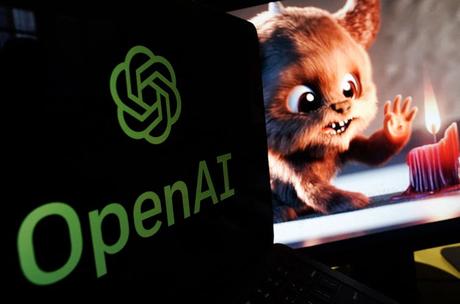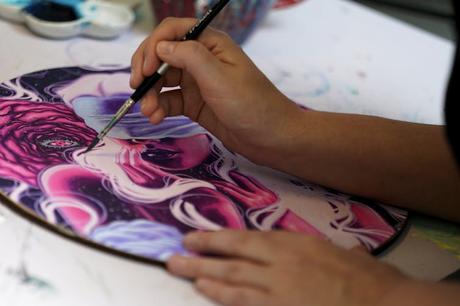 How can users of AI tools like OpenAI's Sora video generator be sure they aren't producing copyright-violating content? Drew Angerer/AFP via Getty Images
How can users of AI tools like OpenAI's Sora video generator be sure they aren't producing copyright-violating content? Drew Angerer/AFP via Getty Images
By Anjana Susarla, Michigan State University
One problem is that output from an AI tool can be very similar to copyright-protected materials. Leaving aside how generative models are trained, the challenge that widespread use of generative AI poses is how individuals and companies could be held liable when generative AI outputs infringe on copyright protections.
When prompts result in copyright violations
The legal argument advanced by generative AI companies is that AI trained on copyrighted works is not an infringement of copyright since these models are not copying the training data; rather, they are designed to learn the associations between the elements of writings and images like words and pixels. AI companies, including Stability AI, maker of image generator Stable Diffusion, contend that output images provided in response to a particular text prompt is not likely to be a close match for any specific image in the training data.

Audit studies such as the one conducted by computer scientist Gary Marcus and artist Reid Southern provide several examples where there can be little ambiguity about the degree to which visual generative AI models produce images that infringe on copyright protection. The New York Times provided a similar comparison of images showing how generative AI tools can violate copyright protection.
How to build guardrails
Legal scholars have dubbed the challenge in developing guardrails against copyright infringement into AI tools the "Snoopy problem." The more a copyrighted work is protecting a likeness - for example, the cartoon character Snoopy - the more likely it is a generative AI tool will copy it compared to copying a specific image.
Researchers in computer vision have long grappled with the issue of how to detect copyright infringement, such as logos that are counterfeited or images that are protected by patents. Researchers have also examined how logo detection can help identify counterfeit products. These methods can be helpful in detecting violations of copyright. Methods to establish content provenance and authenticity could be helpful as well.
With respect to model training, AI researchers have suggested methods for making generative AI models unlearn copyrighted data. Some AI companies such as Anthropic have announced pledges to not use data produced by their customers to train advanced models such as Anthropic's large language model Claude. Methods for AI safety such as red teaming - attempts to force AI tools to misbehave - or ensuring that the model training process reduces the similarity between the outputs of generative AI and copyrighted material may help as well.
Role for regulation
Human creators know to decline requests to produce content that violates copyright. Can AI companies build similar guardrails into generative AI?
There's no established approaches to build such guardrails into generative AI, nor are there any public tools or databases that users can consult to establish copyright infringement. Even if tools like these were available, they could put an excessive burden on both users and content providers.
Given that naive users can't be expected to learn and follow best practices to avoid infringing copyrighted material, there are roles for policymakers and regulation. It may take a combination of legal and regulatory guidelines to ensure best practices for copyright safety.
For example, companies that build generative AI models could use filtering or restrict model outputs to limit copyright infringement. Similarly, regulatory intervention may be necessary to ensure that builders of generative AI models build datasets and train models in ways that reduce the risk that the output of their products infringe creators' copyrights.

Anjana Susarla, Professor of Information Systems, Michigan State University
This article is republished from The Conversation under a Creative Commons license. Read the original article.
This post was originally published on this site

